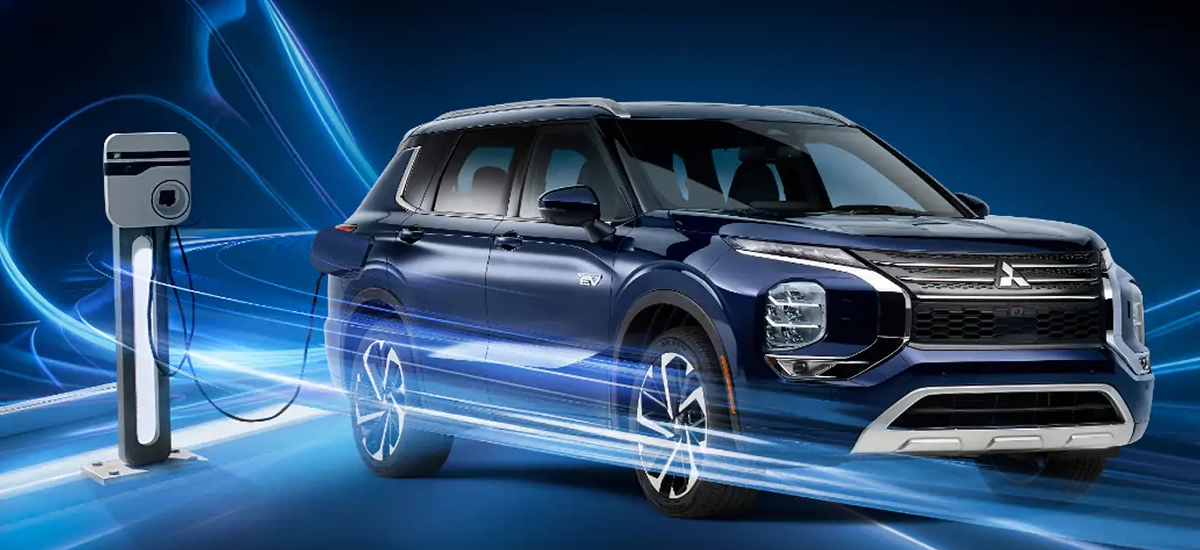
 Your Credit Estimate
Your Credit Estimate
 Your Credit
Your Credit
Your zip code helps us provide you with the most accurate vehicle pricing and vehicle availability.
We estimate your credit score to give you an idea of your monthly payments. To get an accurate payment amount, complete our credit application by clicking the Start Credit Application button below.
start credit application
Even though all of the major automakers have a plan to introduce an all-electric lineup by the end of 2030, it would seem that battery-electric vehicles (BEVs) still have a lot of competition. In early January 2024, some pro insights into the auto industry claimed that automakers were taking a big risk in moving towards BEVs. Heck, Stellantis’ “Dare Forward 2030” business strategy claims it will launch 75 BEVs over the next six years. Sales of electrified models knocked those insights on their butt, with BEVs like the Kia EV6 and EV9 showing an increase of 41 percent in sales. Similarly, the Mitsubishi Outlander plug-in hybrid SUV witnessed a 240.7 percent increase in sales for the plug-in hybrid electric vehicle (PHEV). In fact, PHEVs are gaining momentum in the auto market.
Let’s take a look at Stellantis brands Ram and Dodge. The muscle car automaker was cutting onions when it launched the “Last Call” models, claiming the previous generation of the Dodge Challenger and Dodge Charger would be the last generation to be powered by gasoline engines. It would seem those were crocodile tears, after all. Yes, Dodge did unveil the launch its first-ever all-electric model, the all-new, all-electric 2024 Dodge Charger Daytona SRT BEV, but it’s right alongside a 2024 Dodge Charger powered by a 3.0L Twin Turbo Hurricane engine. So, gasoline is still in.
Ram surprised us all with its 2025 1500 Ramcharger. Although technically a BEV, powered by a 92 kilowatt-hour (kWh) battery pack that transmits power to two electric drive modules (EDMs) – a 250-kilowatt (kW) motor in the front and a 238 kW motor in the rear – the vehicle also comes with an on-board 130 kW generator powered by a 3.6-liter V6 engine. The engine doesn’t have a part to play in running the vehicle, but it does power the on-board 130-kW generator to keep the battery pack charged up, or at least keep it going longer.
Back in 2021, the Koenigsegg Gemera was known as a plug-in hybrid vehicle that could generate 500 bhp (500 horsepower) and 1000 Nm (737 lb-ft of torque). It was all thanks to three electric motors in addition to an internal combustion engine. If a PHEV can deliver that kind of power, then do we really need BEVs just yet? Sure, BEVs are becoming more affordable since the materials automakers use to make PHEVs are also becoming less costly, but let’s look at some facts.
According to J.D. Power data, 87 percent of consumers in the market own a PHEV in comparison with the 66 percent that own a BEV. Simultaneously, 96 percent are likely to purchase a BEV versus the 39 percent that would buy another PHEV. So, BEVs are gaining popularity, but PHEVs are currently in the lead. Think of it like PHEVs paving the way for the next alternative power source of the industry.
"PHEVs can be an effective intermediary step for BEVs," - Brent Gruber, executive director of J.D. Power's EV practice
It all really comes down to meeting a consumer’s needs. BEVs are still not viewed as very practical, and although many automakers have joined forces to form IONNA, it’s going to take a while to complete a nationwide fast-charging BEV network. Gasoline stations are on every corner, every major highway exit, and consumers driving an internal combustion engine vehicle, or a PHEV, can gas up and go. PHEV owners can also recharge the battery component of their vehicle when possible, but it’s more like a matter of convenience versus searching for a charging station. That’s the fear many would be BEV consumers have, and that’s why many of them are currently turning to PHEVs to meet their needs of getting from point A to point B and saving a little money on fuel costs with the bonus of great fuel economy.
It’s not like the auto market will become saturated with BEVs overnight. 2030 is still roughly six years away, and we know how quickly technology can evolve in a short matter of time. Right now, PHEVs are in the lead, but BEVs may come out on top by the end of the decade.
Want to keep up with auto tech and learn more about PHEVs? Follow along with us on NowCar social media.